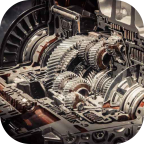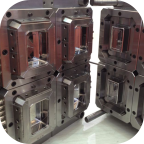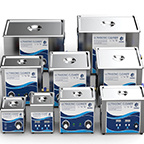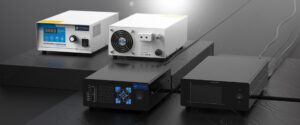Understanding Self-Excited Ultrasonic Generators: A Deep Dive into Circuit Design and Applications
Browse Volume:58 Classify:Support
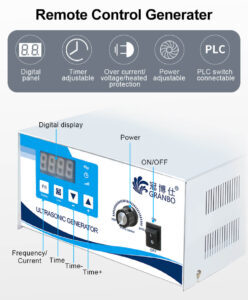
Ultrasonic generators are the backbone of modern ultrasonic cleaning and welding systems, converting electrical energy into high-frequency sound waves. Among the various types of ultrasonic generators, self-excited generators stand out for their simplicity, efficiency, and cost-effectiveness. These devices are widely used in industries ranging from healthcare to manufacturing, offering precise control over ultrasonic frequencies and power output. This article explores the design, functionality, and applications of self-excited ultrasonic generator circuits, providing a comprehensive guide for engineers and enthusiasts alike.
1. What is a Self-Excited Ultrasonic Generator?
A self-excited ultrasonic generator is a type of oscillator circuit that generates high-frequency electrical signals without requiring an external input. Unlike externally excited generators, which rely on a separate signal source, self-excited circuits use feedback mechanisms to sustain oscillations. This design makes them simpler, more compact, and easier to integrate into various systems.
The core components of a self-excited ultrasonic generator include a power amplifier, a feedback network, and a resonant circuit. The feedback network ensures that the output signal is fed back into the input, maintaining the oscillation. The resonant circuit, typically comprising inductors and capacitors, determines the frequency of the generated signal. This frequency usually falls within the ultrasonic range (20 kHz to 400 kHz), making it suitable for applications like cleaning, welding, and medical imaging.
2. Key Components of a Self-Excited Generator Circuit
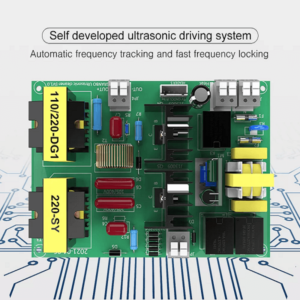
Power Amplifier
The power amplifier is responsible for amplifying the electrical signal to a level sufficient for driving ultrasonic transducers. It must handle high voltages and currents while maintaining efficiency and stability. Modern self-excited generators often use MOSFET or IGBT-based amplifiers due to their high switching speeds and low power losses.
Feedback Network
The feedback network is the heart of the self-excited circuit. It ensures that a portion of the output signal is fed back into the input, creating a closed loop that sustains oscillations. Common feedback mechanisms include phase-shift networks and transformer coupling. The design of the feedback network directly impacts the stability and frequency accuracy of the generator.
Resonant Circuit
The resonant circuit, often an LC (inductor-capacitor) network, determines the operating frequency of the generator. The values of the inductor and capacitor are chosen to match the desired ultrasonic frequency. Advanced designs may incorporate variable capacitors or inductors to allow frequency tuning, enabling the generator to adapt to different applications.
3. Advantages of Self-Excited Ultrasonic Generators

Simplicity and Cost-Effectiveness
Self-excited generators are inherently simpler than their externally excited counterparts, requiring fewer components and less complex circuitry. This simplicity translates to lower manufacturing costs and easier maintenance.
Compact Design
The absence of an external signal source allows self-excited generators to be more compact, making them ideal for portable or space-constrained applications. This is particularly beneficial in medical devices and handheld cleaning tools.
High Efficiency
Self-excited circuits are highly efficient, as they minimize energy losses by directly coupling the oscillator to the load. This efficiency is crucial in high-power applications like industrial cleaning and welding.
Frequency Stability
With proper design, self-excited generators can achieve excellent frequency stability, ensuring consistent performance over time. This is essential for applications requiring precise control, such as semiconductor cleaning and medical imaging.
4. Applications of Self-Excited Ultrasonic Generators
Ultrasonic Cleaning
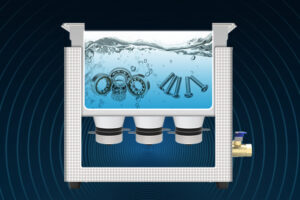
Self-excited generators are widely used in ultrasonic cleaning systems, where they drive transducers to create cavitation bubbles in a liquid medium. These bubbles effectively remove contaminants from surfaces, making the technology ideal for cleaning delicate items like jewelry, medical instruments, and electronic components.
Ultrasonic Welding
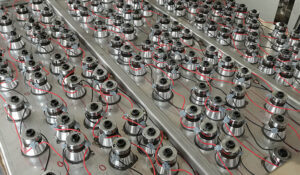 In ultrasonic welding, self-excited generators provide the high-frequency vibrations needed to fuse materials like plastics and metals. The precise control over frequency and power output ensures strong, consistent welds, even in complex geometries.
In ultrasonic welding, self-excited generators provide the high-frequency vibrations needed to fuse materials like plastics and metals. The precise control over frequency and power output ensures strong, consistent welds, even in complex geometries.
Medical Imaging

Self-excited generators are also used in medical imaging devices, such as ultrasound scanners. Their ability to generate stable, high-frequency signals makes them suitable for producing detailed images of internal organs and tissues.
Industrial Processing
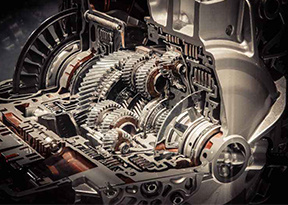
In industries like food processing and pharmaceuticals, self-excited generators are used for tasks like emulsification, homogenization, and particle size reduction. Their efficiency and reliability make them a preferred choice for these demanding applications.
5. Design Considerations for Self-Excited Generator Circuits

Frequency Selection
The operating frequency of a self-excited generator must be carefully chosen based on the application. Lower frequencies (20-40 kHz) are suitable for heavy-duty tasks, while higher frequencies (80 kHz and above) are better for delicate applications.
Power Output
The power output of the generator must match the requirements of the ultrasonic transducer. Overloading the transducer can lead to damage, while underpowering it may result in poor performance. Modern generators often feature adjustable power output to accommodate different loads.
Thermal Management
High-power ultrasonic generators generate significant heat, which must be effectively managed to ensure reliability and longevity. Heat sinks, fans, and thermal sensors are commonly used to maintain safe operating temperatures.
Protection Mechanisms
Self-excited generators should include protection mechanisms to prevent damage from overcurrent, overheating, and short circuits. These features enhance the safety and durability of the system.
6. Future Trends in Self-Excited Ultrasonic Generator Technology
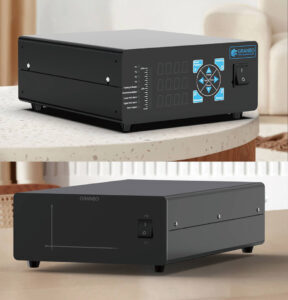
Integration with IoT
The integration of self-excited ultrasonic generators with IoT (Internet of Things) platforms is a growing trend. This allows for remote monitoring, control, and diagnostics, improving efficiency and reducing downtime.
Advanced Materials
The use of advanced materials, such as gallium nitride (GaN) and silicon carbide (SiC), is enhancing the performance of self-excited generators. These materials offer higher efficiency, faster switching speeds, and better thermal conductivity than traditional silicon-based components.
Miniaturization
As demand for portable and handheld ultrasonic devices grows, there is a push toward miniaturizing self-excited generator circuits. This involves optimizing component layouts and leveraging surface-mount technology to reduce size without compromising performance.
Harnessing the Potential of Self-Excited Ultrasonic Generators
Self-excited ultrasonic generators are a cornerstone of modern ultrasonic technology, offering a blend of simplicity, efficiency, and versatility. From cleaning and welding to medical imaging and industrial processing, these devices play a crucial role in a wide range of applications. By understanding their design principles and staying abreast of emerging trends, engineers and industry professionals can unlock new possibilities and drive innovation in this dynamic field.
References
1. Mason, T. J., & Lorimer, J. P. (2002). Applied Sonochemistry: Uses of Power Ultrasound in Chemistry and Processing. Wiley-VCH.
2. Gallego-Juárez, J. A., & Graff, K. F. (2015). Power Ultrasonics: Applications of High-Intensity Ultrasound. Woodhead Publishing.
3. Ensminger, D., & Bond, L. J. (2011). Ultrasonics: Fundamentals, Technologies, and Applications. CRC Press.
4. Povey, M. J. W. (1997). Ultrasonic Techniques for Fluids Characterization*. Academic Press.
5. FDA Guidelines for Cleaning Medical Devices. U.S. Food and Drug Administration. Retrieved from [www.fda.gov](https://www.fda.gov).
 GranboUltrasonic
GranboUltrasonic

